How To Choose The Perfect Portable P.A. For Your Live Performance Or Presentation
If you’re like most musicians and presenters, your gigs likely take you to a range of venues, from cafés, bars and clubs to parks, corporate spaces and houses of worship. All of these situations have something in common: They all call for sound reinforcement, likely supplied by you.
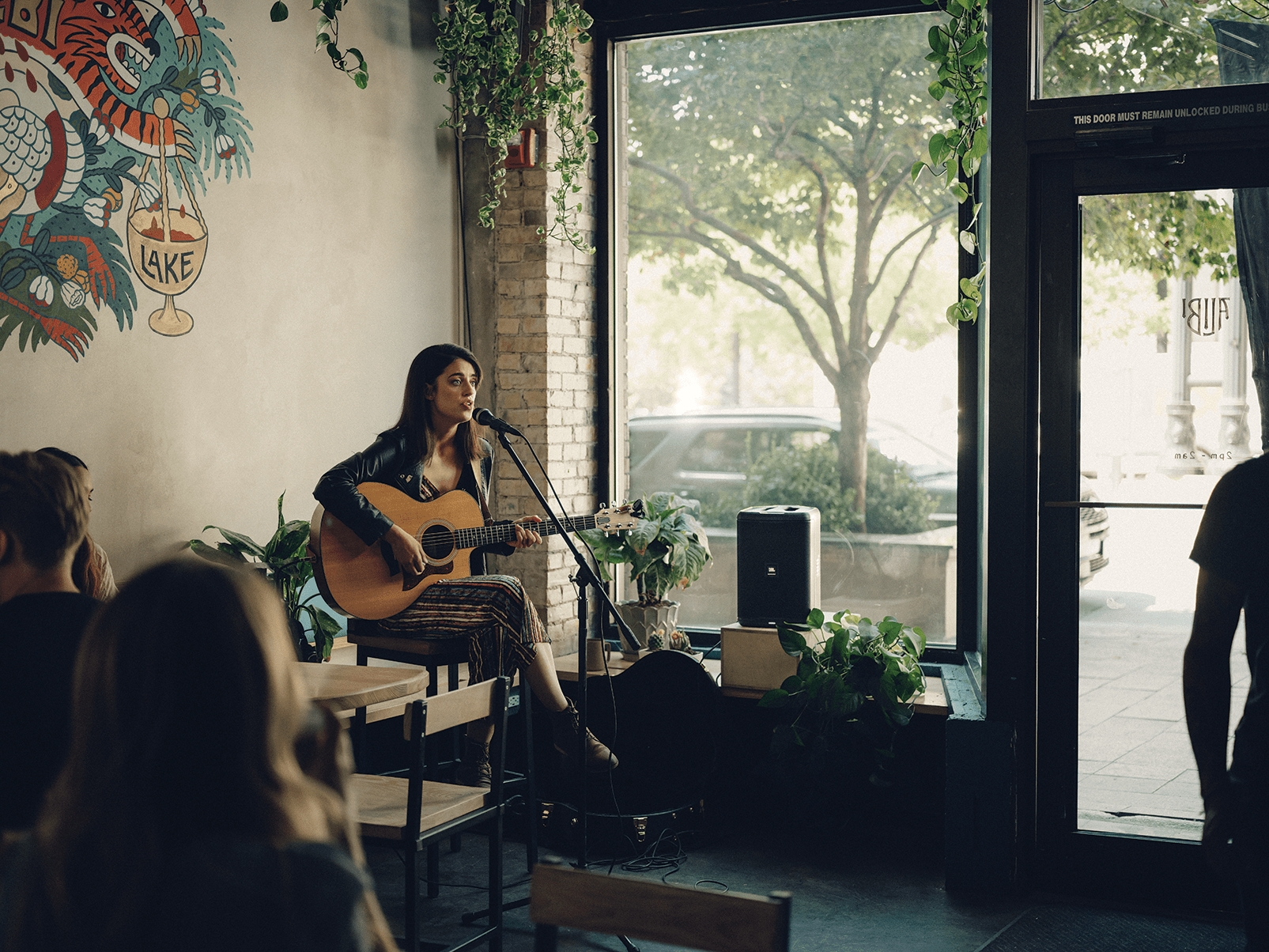
Luckily, the days of schlepping huge, heavy sound systems to your live gigs are over. Breakthroughs in amplifier and driver technologies have led to the rise of compact, portable sound systems that set up fast, are easy to operate and pack a sonic punch—from all-in-one single-speaker systems to full-featured mini speaker arrays that offer powerful coverage previously only available in large-scale component systems.
With so many options out there, it can be tricky figuring out which systems best meet your needs. Whether you’re buying your first portable P.A. or you’re a seasoned user looking to upgrade or expand your system, we’ll walk you through your options and the key considerations for finding gear that’s right for you.
#1 P.A. 101
A sound reinforcement system, at its simplest, has three components: A way to get audio into the system, such as a microphone, instrument input or Bluetooth stream; an amplifier to raise the signal to a level that can power a loudspeaker; and a loudspeaker, which converts electrical energy to acoustic energy. From there, P.A.s vary widely in inputs, mixer capabilities and processing and control features. Systems fall into two general categories: Personal P.A.s and Full-Scale P.A.s
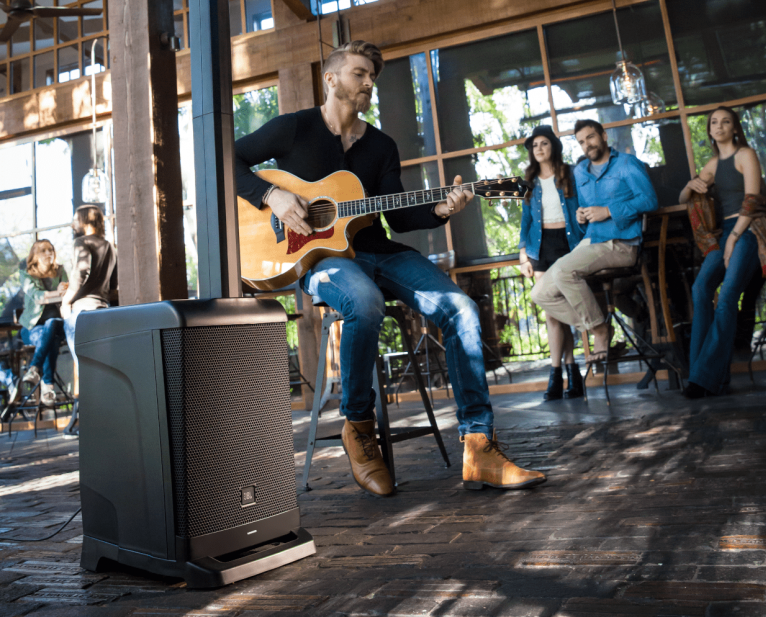
Personal P.A.s cover a wide range of small to mid-sized music concerts and events. They can be self-contained, single-speaker systems such as the JBL EON ONE Compact all-in-one rechargeable P.A.; they can be modular systems based around mini speaker array towers, such as the JBL EON ONE and EON ONE Pro, which each feature six speakers and an integrated subwoofer; or they can be built from individual speakers, such as the JBL EON600 Series family of powered two-way speakers and subwoofer. Smaller, self-contained personal P.A.s are ideal for use in cafés, street performances, small speaking engagements and fitness classes; larger personal P.A. systems, which can include stage monitors and extra speakers, are often used in bars, houses of worship and mobile DJ rigs.
Full-Scale P.A.s are professional systems designed for large venues and events; these are the systems you see at music festivals and in large concert venues. Full-scale P.A.s can be temporary installations or permanent fixtures; they’re usually passive systems and are built from discrete components including speakers, amplifiers, processors and network control hardware and software. Here, we’re focusing on personal portable P.A.s, but it’s always a good idea to think about your sound system in terms of meeting your needs now and in the future.
#2 All-in-One Versus Build-Your-Own Systems
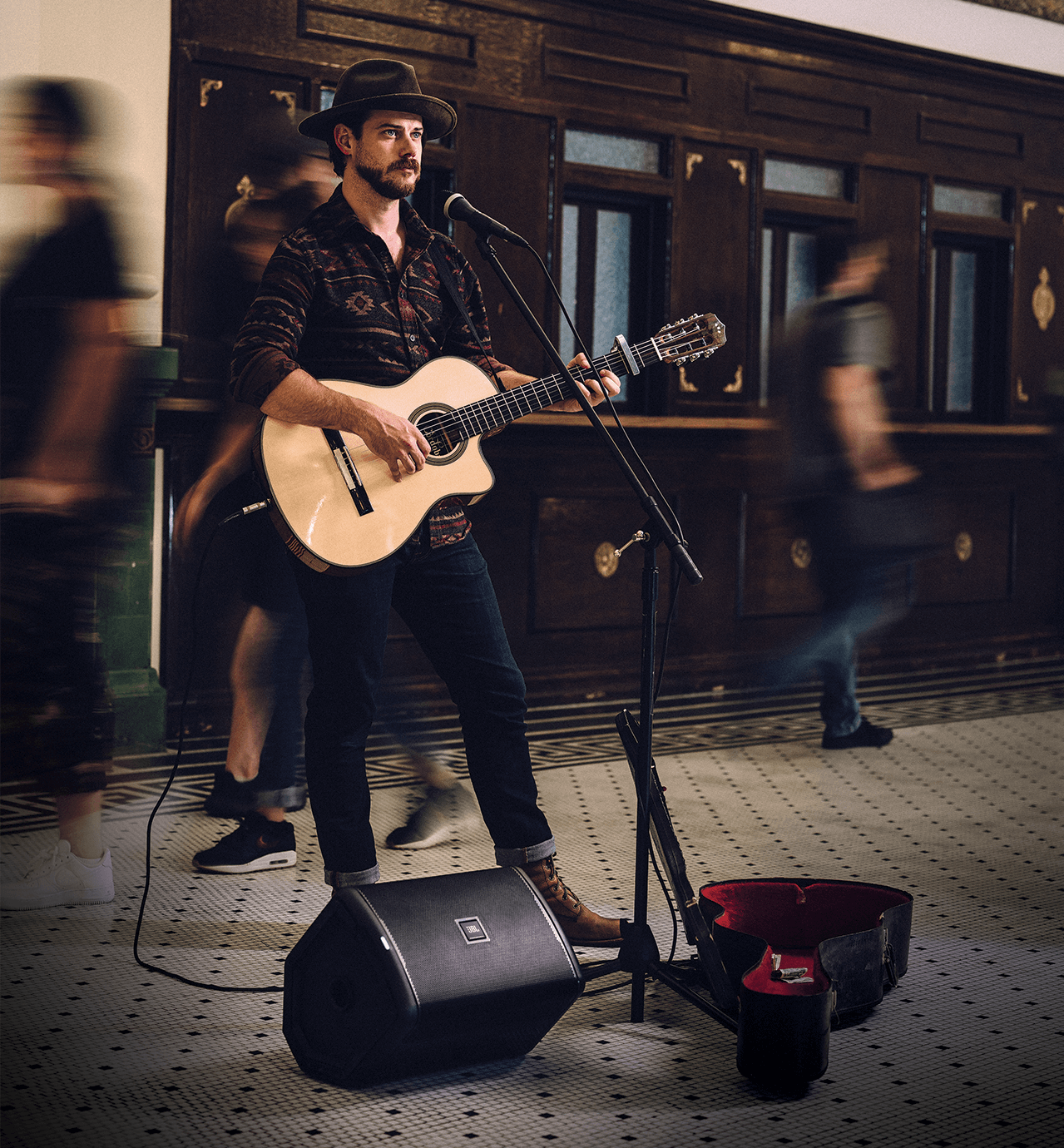
Portable P.A.s comprise mix-and-match components or serve as all-in-one systems that house everything including speakers, mixer, amplification, inputs and effects. In these self-contained systems, everything is designed to seamlessly work together; just plug in your sound sources and you’re good to go. Or, go all in with a P.A. like the JBL EON208P, which features a detachable 8-channel mixer with built-in effects and an AKG microphone.
All-in-one portable P.A.s are designed with plug-and-play simplicity in mind: They can be set up in minutes—even by users with no audio experience—and usually offer a suite of convenient features including USB charging ports, phantom power, EQ and reverb effects and Bluetooth streaming. Systems such as the JBL EON ONE Compact and IRX Series models even include one-touch presets that take the guesswork out of sounding your best. These systems are ideal for presenters, singer/songwriters, fitness instructors and anyone who doesn’t require amplification of a large number of sound sources. (And, you’ll often save money when you purchase bundled equipment.)
More experienced users such as club DJs, touring bands and rental houses can take advantage of advanced functions in customizable systems such as the JBL EON600 Series, PRX800 Series and SRX800 Series, which offer sophisticated EQ and feedback management, system-tuning presets and network control.
#3 Powered Versus Unpowered Systems
Portable P.A.s are available in powered (or “active”) versions, which include onboard amplification, and unpowered (or “passive”) versions, which require external amps. Here, we’re focusing on powered P.A.s, which provide perfectly matched components, are significantly easier to configure and can be set up and torn down faster since they eliminate the hassles of dealing with dedicated amp racks and extra cabling. And, because they are able to stand alone, it’s easy to expand your system with additional powered speakers.
For professionals seeking the flexibility to build or expand passive systems, JBL PRX400 Series and SRX800 Passive Series loudspeakers, stage monitors and subs deliver the power handling response and coverage necessary for demanding audio environments, incorporate tunings for Crown amplifiers and dbx signal processors and offer user-configurable DSP and network control.
#4 How Loud Is Loud Enough?
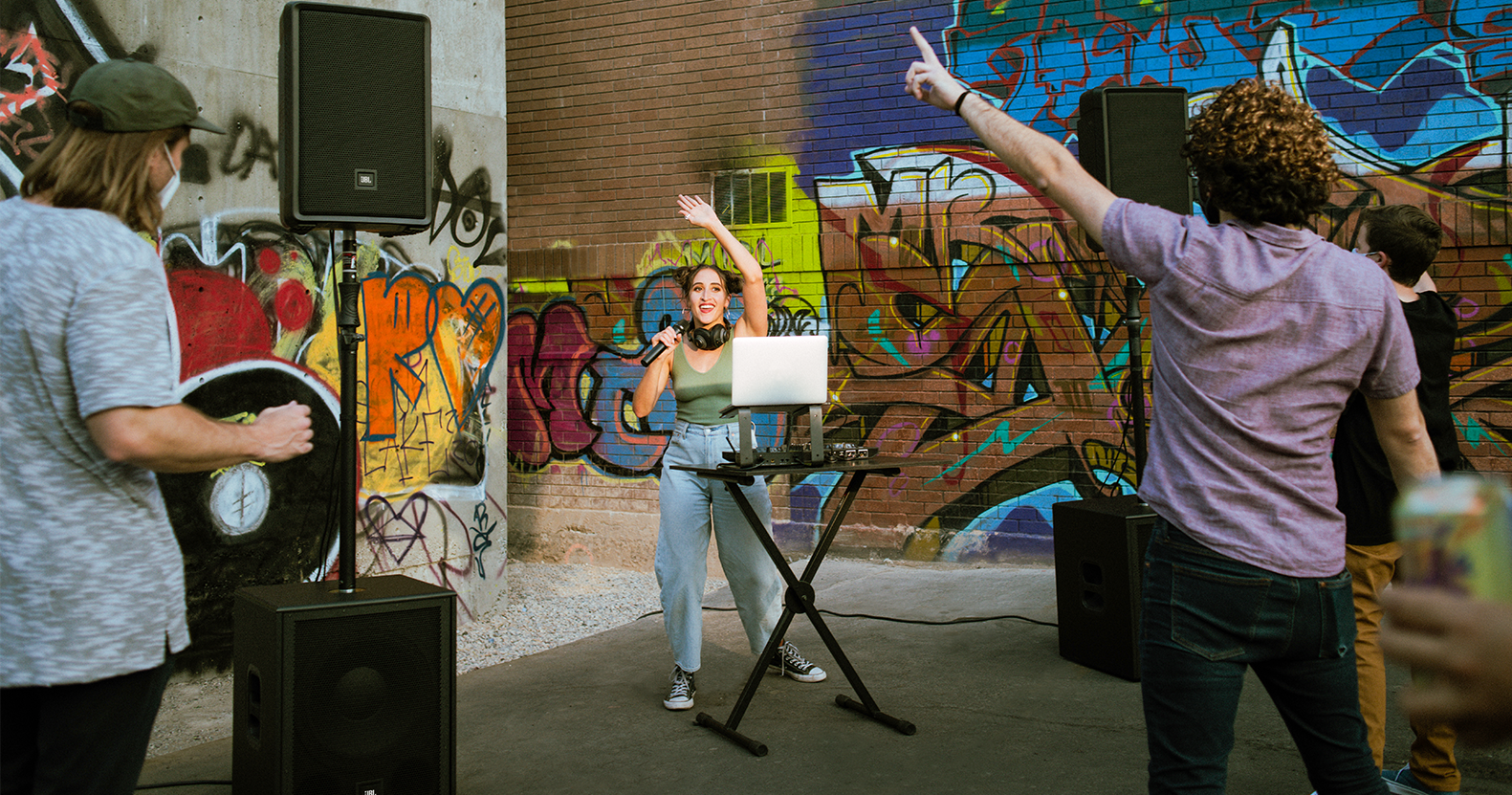
To determine how much power you need, consider the types of venues you are playing in and your potential audience size. As audience and venue size increase, the amount of power (measured in watts) and SPL (measured in decibels) necessary for effective sound reinforcement increases. (It’s always better to overestimate than underestimate.) Think about room size and dimensions, music genre (rock bands usually require more power than folk acts, for example) and band instrumentation. (Playing with a drummer? You’ll need higher output to be heard.) Factor in a healthy amount of headroom, which is the power to handle peaks without distorting.
It’s not easy to place hard numbers on power requirements, but desired volume level plays a big role. A folk act performing in a medium sized room might only require 60–80 watts of amplification, whereas a dynamic heavy metal band playing the same space might need a 2,000-watt system.
Consider your physical performance environment. Large rooms with high ceilings require more power than smaller spaces with lower ceiling. (You can hear the difference just speaking in these spaces. Your voice sounds different when it’s colored by the space.)
Will you be using your P.A. system indoors, outdoors, or both? Because sound is reverberant indoors and dissipates quickly outdoors, you’ll need more power and output to play outside than you would for an equivalent indoor show.
Portable P.A.s balance power and portability. In general, the more powerful the box and more rugged the enclosure, the heavier the weight: For example, the 2-way, 15-inch, polypropylene-enclosed JBL EON615 weighs just 39 pounds and puts out 127 dB, while the 2-way, 15-inch, wood enclosed SRX815P weighs 63 pounds but cranks out 137 dB—that extra 10 dB translates to a tenfold increase in acoustic power and a doubling of perceived volume.
#5 Outdoor Gigs: When You’re Ready to Cut the Cord
If you perform outdoors a lot, will you have access to power? If the answer is no, you’re limited to two choices: A battery-powered P.A., or a P.A. with a generator. And, let’s be honest, a noisy generator does nothing to enhance the enjoyment of your music.
Battery-powered P.A.s offer unmatched freedom to play anywhere. The JBL EON Family includes two battery-powered P.A. systems: The tough-and-tiny, 17.6-pound EON ONE Compact self-contained P.A. features an 8-inch speaker that outputs a robust 112 dB, with an extended low-end response down to 37.5 Hz—nearly an octave lower than other P.A.s in its class. Its bigger sibling, the EON ONE Pro, delivers 118 dB of crystal-clear sound, thanks to its 6-speaker mini column array and built-in subwoofer.
How long will you be performing? The EON One Pro operates for 6 hours on a single battery charge, while the EON ONE Compact operates for 12 hours and offers the ability to swap its battery.

What kind of mixer capabilities do you need? Do you already own a standalone mixer, or do you need a system with a self-contained mixer? The EON ONE Compact offers a 4-channel mixer, while the EON ONE Pro has a 7-channel mixer. How about effects and remote app control? If you’re looking for more audio conveniences, the EON ONE Compact is the way to go. If those functions aren’t as important and you prefer more power and headroom, the EON ONE Pro fits the bill.
If you need more sound coverage, simply add more P.A. units: EON ONE Compact and EON ONE Pro P.A.s can be daisy-chained together using their built-in Pass-Thru I/Os. You can even control and stream Bluetooth audio to four EON ONE Compact units from a single smartphone using the JBL Compact Connect app.
If you’re playing large outdoor gigs with access to power, consider a system such as the JBL EON600 Series, PRX800 Series and SRX800 Series. Systems that access fixed power offer more headroom and greater overall volume.
#6 How Many Input Channels?
Most portable P.A. systems offer at least two audio input channels, which cover most public speaking and singer/songwriter scenarios; P.A.s with Bluetooth streaming capability, such as JBL IRX Series and EON ONE Series systems, expand their flexibility with the ability to stream background music and other recorded program material from mobile devices. Bigger systems offer up to 12 inputs and can be expanded with standalone mixers. (Using condenser microphones? JBL EON208P, EON ONE Compact and EON ONE Pro P.A.s feature built-in phantom power.) To get even more functionality out of your P.A, consider adding a Soundcraft Ui Series remote-controlled surfaceless mixer, which effortlessly transitions from the studio to the stage.
#7 Raise Your Voice

For presenters and instructors, speech intelligibility is priority number one. JBL portable P.A.s all offer EQ for shaping the sound of your voice, and JBL EON ONE Compact and IRX Series models feature convenient one-touch ducking, which automatically lowers background music when speech is detected, so you’ll always be heard, loud and clear.
#8 Remote Control
Many JBL portable P.A.s can be controlled wirelessly via control apps, which let users check sound from anywhere in the room while diving deeper into effects and other features. JBL EON ONE Compact, EON ONE Pro and EON600 Series systems are controlled over Bluetooth while JBL PRX800 systems can be controlled over wi-fi.
#9 The Freedom to Go Wireless
Dynamic performers, presenters and fitness instructors need to be able to roam the stage or room; best paired with secure, easy-to-use wireless systems that support handheld mics, in-ear monitors and instrument belt packs.
#10 Keeping a Low Profile
In scenarios such as ceremonies, presentations and houses of worship, bulky audio gear can distract from the message. Slim, low-profile, fully self-contained systems such as the JBL EON ONE and EON ONE Pro provide 118 dB of sound reinforcement without competing for visual attention.
#11 Add Shimmer and Sparkle
When it comes to audio quality, power and clarity are hallmarks of every JBL P.A. system. But if you want to take your sonic presentation to the next level, audio effects can really add polish, whether you’re aiming to dial up the drama or just sound your best in any space. JBL portable P.A.s feature built-in effects ranging from one-touch presets to sophisticated, studio-grade EQs and reverbs to advanced feedback protection.
#12 Versatile Configuration Options
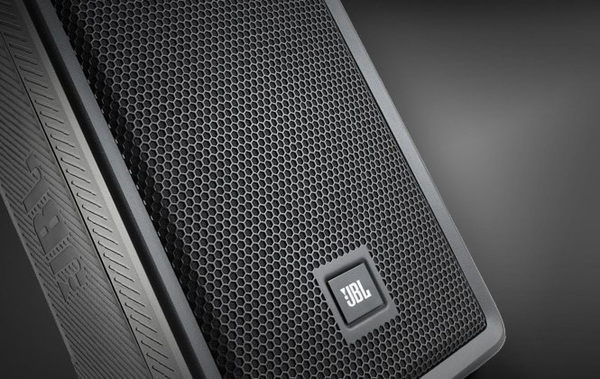
Ask yourself if you need to set up your system differently for different applications. Ultra-compact portable P.A.s such as the EON ONE Compact are designed to be set on a surface or pole- or stand-mounted (and can save quick recall presets for different scenarios); larger, modular P.A.s such as the EON600 Series, PRX800 Series and SRX800 Series add industry-standard suspension points.
UNDERSTANDING THE SPECS
Specs shouldn’t be the only factor informing your P.A. choice, but they can give you objective idea of system performance. Let’s look at a few key measurements.
Dynamic range:
The difference between the loudest and softest levels in an audio signal, typically measured in decibels.
Continuous power handling:
This indicates the power level, in watts, that a speaker can handle over an extended period of time.
Peak power handling:
The maximum power that a loudspeaker can handle in short, instantaneous bursts. (While this spec can be impressive, continuous power handling is a better indicator of real-world performance.)
Frequency response:
The spectrum of frequencies produced at a P.A. system’s output. The range of human hearing is 20 Hz–20 kHz; ideally, full-range speakers provide even response across most of that range, though they can be supplemented on the low end with subwoofers, which are more efficient at reproducing low frequencies’ longer waveforms.
Sensitivity:
Measures how well a speaker converts amplifier power to acoustic energy—in other words, how loudly a speaker will play at a given electrical input level. Sensitivity is measured in decibels per 1 watt per 1 meter, shortened to a decibel rating.
Max SPL:
Maximum sound pressure level measures a speaker’s acoustic output (in decibels) at a distance of 1 meter. This metric directly relates to a speaker’s sensitivity rating and maximum power rating.
When it comes to speakers, it’s important to consider individual specs in the context of system design and overall performance. Don’t confuse power for output; a P.A.’s wattage rating alone is not an accurate indicator of output potential, because an efficient speaker driver system will deliver a higher output at the same power rating than a less efficient design. Always consider power ratings in combination with max SPL output.
Evaluate loudspeaker coverage in the context of power: A powerful speaker with narrow coverage may be an ideal stage wedge, but a speaker with less power and broader coverage may a better main speaker.
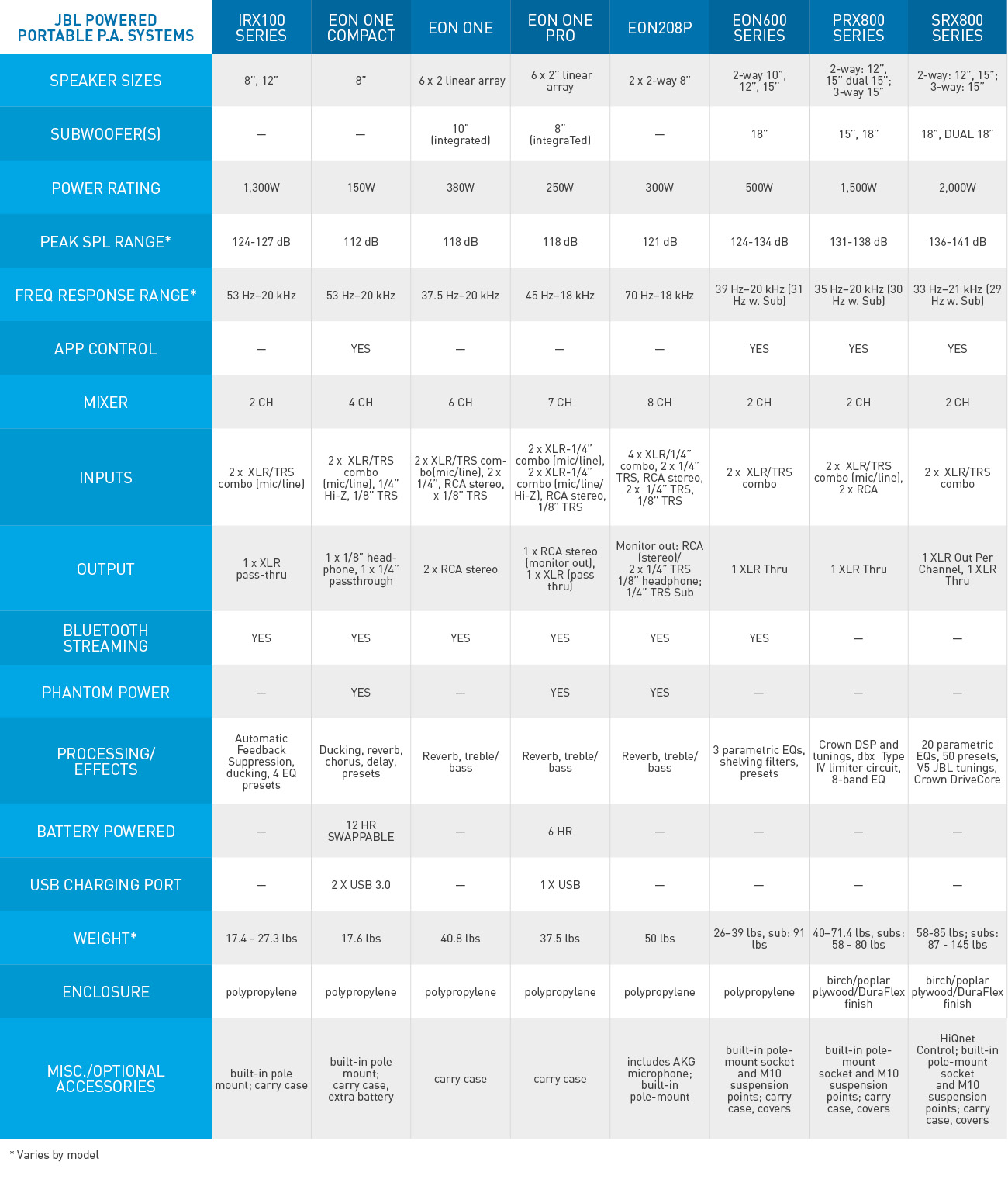
In it for the Long Haul
Investing in a P.A. system is an investment in your performing career, so as you’re weighing your options, consider how your system will be able to grow with your needs. You can expand your system in many ways, from adding stage monitors and secondary mains to increasing capabilities with a standalone mixer. Look for I/Os that can connect additional speakers, media players and recording devices.
You’ve probably noticed that we haven’t talked about budget. The fact is, you can pick up a simple portable P.A. for a couple hundred dollars or drop thousands on a fully loaded monster system. Setting a budget will naturally narrow your choices, but by working through the considerations outlined here, you’ll end up with a clear idea of the systems that best fit your needs—whether your priorities are control, customizability, adaptability or sheer output. Then, it’s all about honing your chops, dialing in your perfect sound and putting on an unforgettable show!




